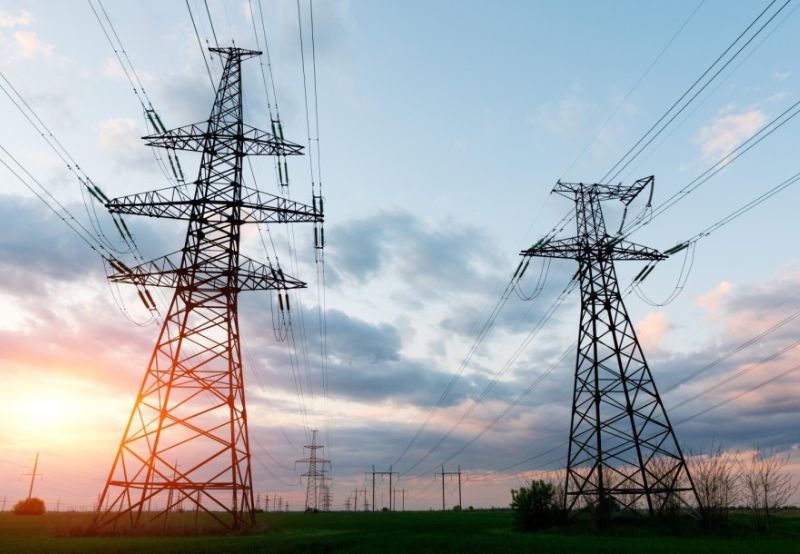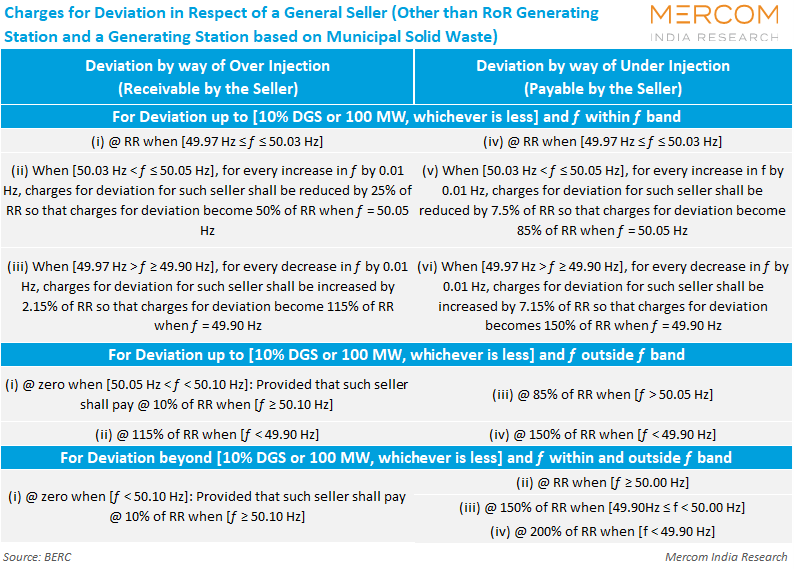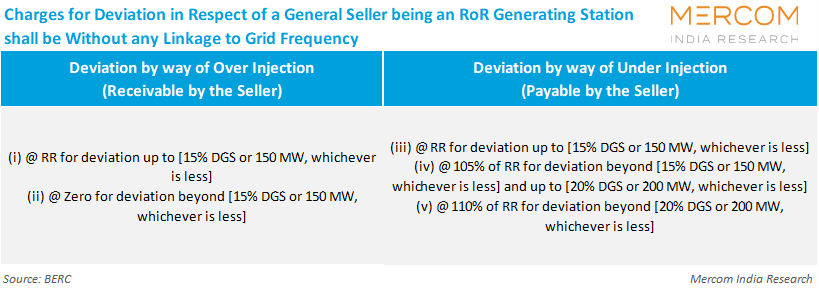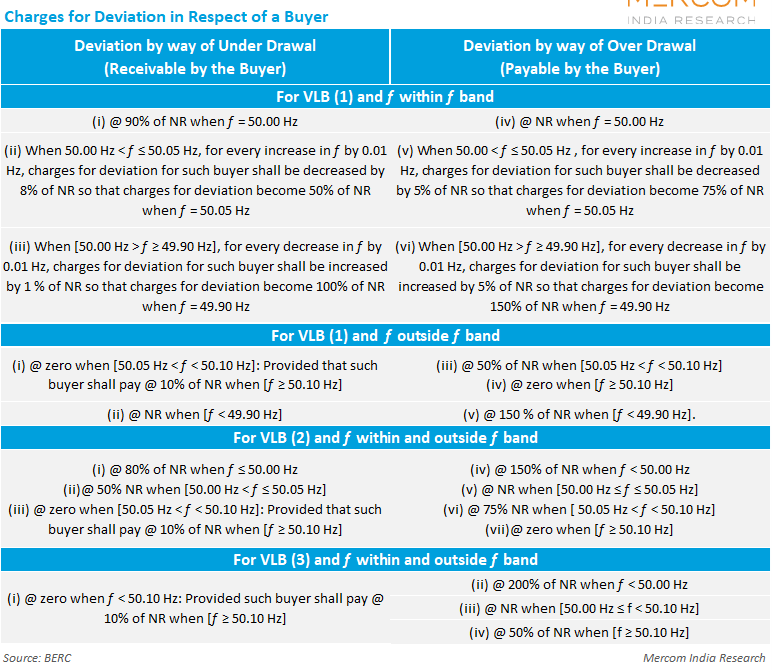BERC Issues Draft Deviation Settlement Mechanism Regulations
There will be no charges for injecting infirm power into the grid
August 21, 2025
Follow Mercom India on WhatsApp for exclusive updates on clean energy news and insights
The Bihar Electricity Regulatory Commission (BERC) has issued the draft regulations for the deviation settlement mechanism.
The regulations apply to all intra-state and grid-connected entities in Bihar, including distribution licensees and deemed distribution licensees. It will also apply to open access consumers (both partial and full) connected to the intra-state transmission system (InSTS). The renewable energy generation stations connected to these InSTS must have at least 5 MW of exportable capacity.
The Commission has invited comments on the deviation settlement mechanism from stakeholders and the public before September 8, 2025. It will also hold a public hearing on September 11, 2025.
Computation of Deviation
Deviation in a time block for general sellers will be computed as follows:
Deviation-general seller (DGS) (in MWh) = [(Actual injection in MWh)–
(Scheduled generation in MWh)].
Deviation-general seller (DGS) (in %) = 100 x [(Actual injection in
MWh) – (Scheduled generation in MWh)]/[(Scheduled generation in MWh)].
Deviation in a time block for WS sellers shall be computed as follows:
Deviation – WS seller (DWS) (in MWh) = [(Actual Injection in MWh)–
(Scheduled generation in MWh)].
Deviation-WS seller (DWS) (in%) =100 x [(Actual Injection in MWh)–
(Scheduled generation in MWh)]/[(Available Capacity].
Deviation in a time block for buyers shall be computed as follows:
Deviation- buyer ((DBUY) (in MWh) = [(Actual drawal in MWh) –
(Scheduled drawal in MWh)].
Deviation- buyer ((DBUY) (in %) = 100 x [(Actual drawal in MWh) –
(Scheduled drawal in MWh)] / [(Scheduled drawal in MWh)].
Normal Rate of Charges
The normal deviation charge rate for a particular time block will be the highest of the following:
- The weighted average clearing price (ACP) of the integrated-day-ahead market segments of all the power exchanges
- The weighted average ACP of the real-time market segments of all the power exchanges
- The sum of 1/3 [ weighted average of ACP of the integrated-day ahead market segments of all power exchanges, 1/3 [ weighted average ACP of the real-time market segments of all the power exchanges, and 1/3 [ancillary service charge computed based on the total quantum of ancillary services (secondary reserve ancillary service – UP and tertiary reserve ancillary service – UP) deployed and the net charges payable to the ancillary service providers for all the regions]
Calculation of Deviation Charges
Deviation charges for general sellers (other than a run-of-river (RoR) generating station and a generating station based on municipal solid waste) will be as follows:
Deviation charges for a RoR generating station without any linkage to grid frequency will be as follows:
Deviation charges for a generating station based on municipal solid waste without any linkage to grid frequency will be as follows:
A wind-solar hybrid power generator (WS seller), including such generating stations aggregated at a pooling station through a qualified coordinating agency, shall be without any linkage to grid frequency and will be as follows:
Deviation charges for a standalone energy storage system (ESS) will be the same as applicable to a general seller (other than a RoR generating station and a generating station based on municipal solid waste).
In the charging mode, deviation through overdrawal will be treated as under injection, and through underdrawal will be treated as over injection.
The deviation charges will be settled as follows:
Deviation charges, including the computation formula of deviation for charging when a pumped storage project is a standalone ESS, will be the same as for a generating station based on solar resources.
Deviation charges, including the formula for deviation computation for a WS Seller with ESS connected at the same interconnection point, can be as follows:
- As applicable to a WS seller of the respective category during the period solar or wind, or hybrid generating station is injecting power
- As applicable to a standalone ESS when only the storage system is injecting power
- As applicable to a standalone ESS for drawal by the storage system based on the schedule from the grid
Deviation charges for receivable/payable for the buyer will be as follows:
Deviation charges for injecting infirm power will be as follows:
There will be no charges for injecting infirm power into the grid.
For thermal power stations, any infirm power injected into the grid from the date of first synchronization until the successful completion of the trial run will be paid at the normal rate of deviation charges. However, this payment will be capped at ₹2.86/kWh or as revised by the Central Commission.
Once the trial run is completed, any scheduled infirm power will be treated like regular generation. In such cases, deviations will be charged per the rules applicable to general or WS sellers.
There will be no charges for injecting infirm power or for any deviation of scheduled infirm power caused by over-injection from a general or WS seller if the grid frequency is above 50.05 Hz.
Charges for Startup Power and Deviations
Any drawal of startup power by a generating unit before its commercial operation date (COD) will be treated as a deviation.
The deviation charges for drawal of startup power before COD or to run auxiliaries during a project shutdown will be payable at the reference charge rate or the contract rate.
In cases of forced or partial seller outage, deviation charges will be per the reference charge rate for a maximum of eight-time blocks, or until the seller revises its schedule, whichever is earlier.
For a seller whose bids are cleared in the high price day-ahead market (HP-DAM), the reference charge rate for under-injection will be equal to the weighted average ACP of HP-DAM segments across all power exchanges for that time block.
Accounting of Charges for Deviation Pool Account
The state load dispatch centre (SLDC) will prepare a weekly statement of deviation charges every Thursday.
A state deviation pool account will be maintained and operated by the SLDC. However, the Commission may assign this responsibility to another entity if required.
The state deviation pool account will be credited from the following sources:
- Payments of deviation charges and late payment surcharges
- Receipts from the deviation and ancillary services pool account-regional towards reactive energy exchange, DSM issued for the state by Eastern Regional Power Committee (ERPC) per the Indian Electricity Grid Code (IEGC)/Central Electricity Regulatory Commission (CERC) Deviation Settlement Mechanism Regulations.
- Any other charges as may be notified by the Commission.
The state deviation pool account will be debited for expenses, including the cost of recovering deviation charges and any other related expenses.
The state deviation pool account will also be charged for the following:
- Overdues or penal interest
- Normal interest
- Transfers to the Regional Deviation Pool Account
- Payments to the Deviation and Ancillary Services Pool Account-Regional towards reactive energy exchange, DSM issued by the ERPC for the state as per IGEC/CERC DSM Regulations.
- Any other charges as notified by the Commission.
The SLDC will maintain separate settlement accounts for interstate and intra-state deviations.
Any surplus funds in the state deviation pool account at the end of a financial year will be used to improve power system operations.
The funds can also be spent on studies and measures to enhance the reliability, security, and safety of grid operations, and capacity-building and training programmes related to system and market operations.
The SLDC will prepare programs and submit an annual plan to utilise the surplus fund before the Commission. The Commission may also invite proposals or suggestions from stakeholders before approving the use of surplus funds.
If there is a shortfall of funds in the state deviation pool account at the end of the weekly settlement cycle, the deficit will be recovered by levying an additional charge on state entities.
Deviation Accounting Procedure
The SLDC will prepare a detailed energy accounting procedure within 30 days of the notification of these regulations. This procedure must be submitted to the Commission for approval.
Before submission, the SLDC will conduct a stakeholder consultation by publishing the draft procedure on its website and seeking feedback.
The settlement of deviations for consumers connected to the intra-state transmission system, as well as those connected to the distribution network, will be carried out in line with the provisions of the open access regulations and their subsequent amendments.
Payment Schedule for Deviation Charges
State entities must pay the due amounts within 10 days of the SLDC stating the charges.
Any delay will attract a late payment surcharge of 0.04% per day.
If a state entity fails to make timely payments during the previous financial year, it will be required to open a letter of credit (LC) in favor of the SLDC. The LC must be 110% of its average weekly deviation liability from the previous year and must be opened within 15 days of the new financial year.
If a state entity fails to pay deviation charges within 10 days from the date of issue of the statement of deviation charges, the SLDC will have the right to encash the LC to recover the dues. The entity will then be required to replenish the LC amount within three days.
Reactive Energy Management
The SLDC will manage reactive energy requirements per the IEGC provisions. The settlement of the reactive energy pool account will also follow IEGC procedures.
Recently, BERC proposed including a new category of distributed renewable energy in its Renewable Power Obligation for the financial year 2030.





